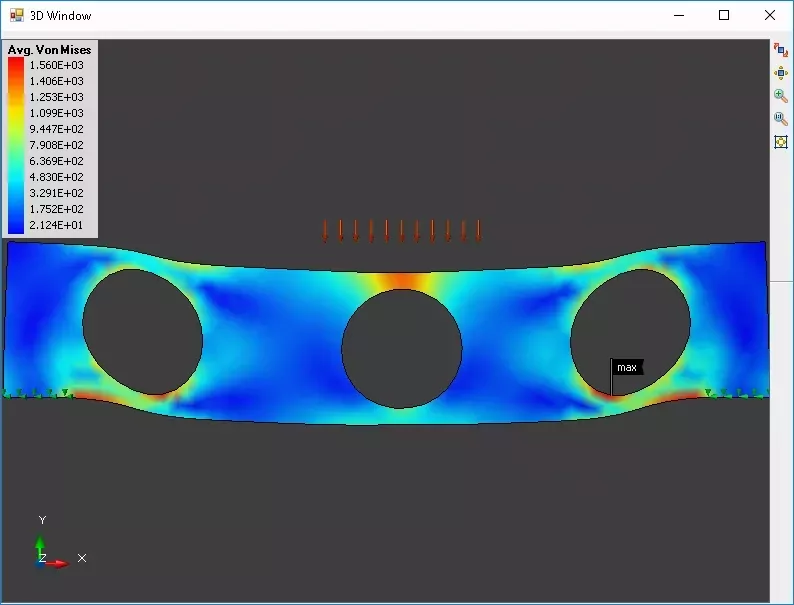Posts - Page 2 of 3
.Net Library for Finite Element Analysis
Finite element analysis is a really cool technique that can be applied to solve lots of engineering problems. Imagine that you’re job is to model how a structural part will react when a force is applied to it. Within the material there could be trillions of atoms that are interacting with each other, some pushing and some pulling one another, how would you begin to compute those areas that are high stress? That is what finite element analysis does for us, we can break down the impossibly large problem into smaller pieces by meshing the physical structure and then computing the interactions of each node in our mesh, think of it as eating the elephant one byte at a time. 
Notebook: What I learned designing a neural network that plays an arcade game
My goal for this project was to become more familiar with how neural networks operate, and to understand the sorts of problems that they can be applied to for future projects. That is why for this project I opted not to use the a prebuilt machine learning library framework, but instead opted for an approach where I build up the math types using raw c#. Luckily I had a project left over from many years ago in which I developed a Matrix type and coded many of the math operators. I felt that going down this road gave me a deeper insight into how a neural network works at the bare metal.
How-To: Install Home Assistant on a Netgear ReadyNAS
A quick reference guide for how to perform the necessary steps to install homeassistant on a NetGear ReadyNAS. The purpose of this guide is to record the steps required to install Home Assistant on a NetGear ReadyNAS running OS 6.9.3.
Configure your Angular applications with Server Environment Variables
To configure an angular client to receive environment variables as set on the host Server. This allows us to promote our code base between environments without altering our client files. This could also be used in a scenario where we take advantage of Azure slotting to provide slot persistent settings to the client during a swap.
Create Task Asynchronous style calls from Event Handlers
If you find yourself dealing with a lot of legacy asynchronous code that uses event handlers. You may want to wrap these legacy event calls using the new .Net Task Asynchronous style wrappers.
Levenshtein Edit Distance Algorithm
There are many algorithms in Computer Science that help us to understand our data in meaningful ways. Edit distance algorithms are one such set of tools. They tell us the minimum number of edits that must be made in order to turn a source input string into a destination string, thus the ‘distance’ from out source to our destination.
How-to setup Basic Authentication filter in an Asp.Net Web API
When combined with TLS security Basic Authentication can be useful in situations where interfacing with another party may dictate this choice for you.
How-to seed data in an Entity Framework Core 2.0 project
The data seeding mechanism in Entity Framework Core has changed from the implementation in EF6. This is a quick-start method to implement data seeding in your projects.
Homebrew Gear Position Indicator
Sometimes you can’t buy the exact thing you want from a store, this is a wonderful opportunity where we can play with some new tools. Let me show you a hardware project where I designed the circuit and coded the firmware so that I could add a gear position indicator to my Motorbike. 
Create a simple graphing voltage meter using a Digispark board
Graphing meters are a tool that record voltage levels over time. I only needed one for a short time, so I turned a DigiSpark into one.
